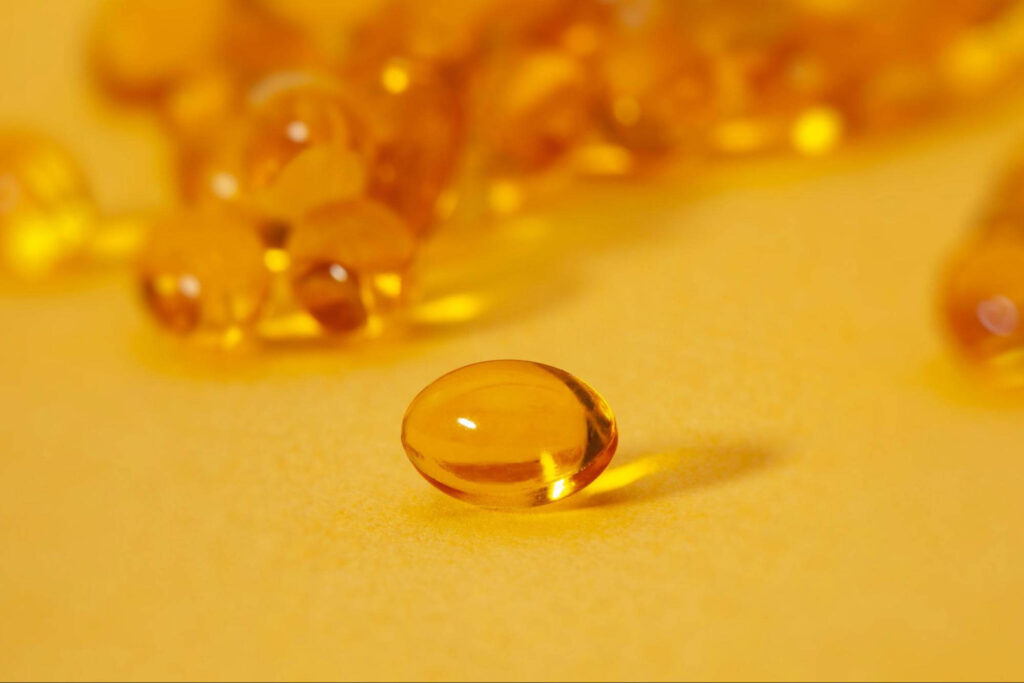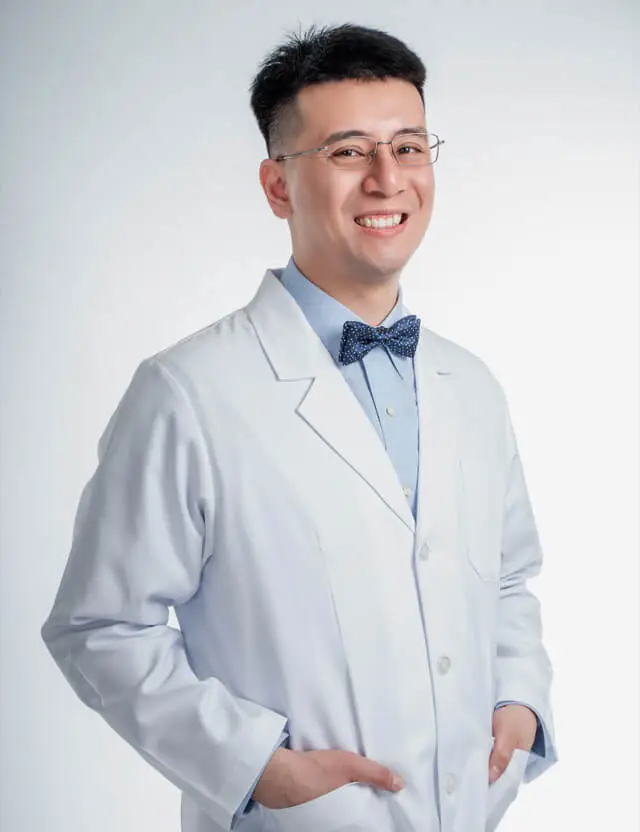Yes, you can still get vitamin D on a cloudy day, but the quantity is much lower due to less UVB sunlight. Understanding how to boost your vitamin D levels through food, supplements, and moderate sun exposure is important for maintaining good health.
Do You Get Vitamin D On A Cloudy Day?
Yes, you can still get vitamin D on cloudy days, but your skin will receive far less UVB radiation than it would on a bright, sunny day. Studies show that dense cloud cover may block up to 90% of UVB radiation. Lighter clouds, however, could only partially block UVB rays, leaving some room for vitamin D production.
Based on research, vitamin D synthesis may continue under cloud cover; however, the efficiency is reduced. The clouds’ density and thickness determine the amount of decrease. For example, dispersed clouds may enable adequate UVB penetration to produce some vitamin D, but gloomy skies with heavy clouds may significantly reduce it.
Furthermore, research published found that those living in places with frequent cloud cover or severe air pollution have lower average serum vitamin D levels than those in sunny areas. This emphasizes the significance of looking into other sources of vitamin D in such settings to prevent vitamin D deficiency.
What is Vitamin D?

Vitamin D, also known as the ‘sunshine vitamin,’ is a fat-soluble vitamin required for several biological processes. Unlike other vitamins, which are mostly received from diet, vitamin D is unusual in that it may be produced by the body when exposed to sunlight, contributing to optimal health.
There are two major types of vitamin D:
- Vitamin D2 (ergocalciferol) is found in specific plant-based diets and fortified products. It is less potent than D3 and has a shorter duration of effect in the body.
- Vitamin D3 (cholecalciferol) is produced in the skin in reaction to UVB radiation from sunshine and can be found in animal-based meals. Vitamin D3 is more effective in increasing and sustaining vitamin D levels in the bloodstream.
A study shows that vitamin D deficiency, or a lack of adequate vitamin D levels in the body, might harm general health. According to the National Institute of Health, severe vitamin D deficiency can cause rickets and osteomalacia in children and adults.
Additionally, vitamin D plays a role in mood regulation and maintaining blood pressure, both of which are critical for overall well-being.
Why Do We Need Vitamin D?

Vitamin D is essential for a several of reasons, including:
Bone Health
Vitamin D helps in the calcium and phosphorus absorption in the intestines, which are essential for healthy bone development and maintenance. Adequate vitamin D levels protect against rickets in children and osteomalacia or osteoporosis in adults.
A vitamin D shortage can cause brittle bones and increase the risk of fractures. According to the National Institutes of Health (NIH), optimal vitamin D levels help older persons avoid falls and fractures by enhancing muscular function and balance.
Immune Function
Vitamin D controls the immune system, allowing it to operate correctly and lowering the risk of infection and autoimmune illnesses. Studies have proven that vitamin D improves the pathogen-fighting abilities of monocytes and macrophages—white blood cells that play an important role in immune defense—while also reducing inflammation.
According to research published, appropriate vitamin D levels are connected with a lower incidence of respiratory infections and may even protect against COVID-19. Additionally, vitamin D can have mood-boosting effects, contributing to overall well-being.
Muscle Function
Vitamin D is required for muscular function, which can cause muscle weakness and discomfort. Vitamin D receptors exist in muscle tissue, and active vitamin D improves muscle protein synthesis and function. A study found that vitamin D supplementation can increase muscular strength and lower the incidence of falls in older persons.
Cardiovascular Health

New study reveals that vitamin D may benefit heart health and improve cardiovascular disease outcomes. Observational studies have linked low vitamin D levels to an increased risk of hypertension, heart attack, and stroke. A meta-analysis found that vitamin D supplementation may lower the incidence of cardiovascular events, but further study is needed to establish a conclusive causal association.
Vitamin D also offers benefits of vitamin in preventing hair loss, contributing to overall health.
How Long in the Sun for Vitamin D?
Skin type, location, and amount of sun exposure all impact vitamin D production. To ensure sufficient vitamin D, aim for 10-30 minutes of sun exposure each week on your face, arms, and legs.
- People with fair skin should get around 10-30 minutes of noon sun exposure several times each week.
- People with darker skin may require longer exposure times, up to several hours, due to increased melanin levels, which impair the skin’s capacity to generate vitamin D.
Wearing sunscreen can significantly reduce the skin’s ability to produce vitamin D, but it is essential for protecting against skin cancer. The amount of sun exposure required to synthesize sufficient vitamin D varies according to these parameters.
The efficacy of sun exposure is also determined by the strength of UV rays and the amount of ultraviolet light that enters the skin, both of which can be impacted by time of day and cloud cover. Knowing how much vitamin D you need from sun exposure can help you manage your time in the sun effectively.
Factors That Affect Vitamin D Production
Skin Color
Melanin, the pigment that determines skin color, works as a natural sunscreen by absorbing UVB radiation. People with darker skin require more sun exposure to create the same amount of vitamin D as those with lighter skin. According to research, those with dark skin may require three to five times more sun exposure to create appropriate vitamin D levels than people with light skin.
Latitude
UVB radiation levels are strongly influenced by geographic location. People who live closer to the equator receive more direct sunshine throughout the year, making it simpler to generate vitamin D. Conversely, those at higher latitudes may suffer, particularly during the winter months when the sun’s angle is lower.
According to a study, those above 37 degrees latitude are more likely to suffer from vitamin D insufficiency during winter. On a cloudy day, the production of vitamin D can be further reduced due to the decreased UVB radiation reaching the skin.
Therefore, vitamin D on a cloudy day might be lower than on a sunny day, making it important to monitor vitamin D levels and consider supplements if necessary.
Sunscreen

While sunscreen is vital for preventing skin cancer, it can also block UVB rays, which are required for vitamin D synthesis. Sunscreens with SPF 30 can inhibit vitamin D synthesis by up to 95 percent. However, brief, unprotected exposure can assist in maintaining a balance between sun protection and healthy levels of vitamin D.
According to studies, periodic sun exposure without sunscreen for 5-30 minutes, depending on skin pigmentation, is sufficient to maintain appropriate vitamin D levels while not significantly raising skin cancer risk. Sunscreen use should be managed to allow some exposure for vitamin D synthesis while protecting against overexposure.
Sun Exposure
Direct sunlight exposure is essential for vitamin D biosynthesis. UVB rays do not permeate glass. Hence, exposure through windows does not stimulate vitamin D. Outdoor exposure is required.
Research underlines the importance of outdoor activities in maintaining sufficient vitamin D levels, particularly among children and adolescents. Even on a cloudy day, some UVB radiation can penetrate the clouds and contribute vitamin D, although at a reduced rate.
Time of Exposure
Because UVB rays are most powerful during the midday sun, it is the most efficient time for vitamin D synthesis. Morning and late afternoon sun exposure produces less UVB radiation, necessitating longer exposure durations.
According to research published in Environmental Health Perspectives, the peak UVB intensity occurs between 10 a.m. and 3 p.m., making this the best period for vitamin D synthesis. This is also beneficial for weight loss as the timing of exposure can align with outdoor physical activities.
Seasonality
During the winter, UVB light may be inadequate for producing vitamin D, particularly at higher latitudes. This phase, known as the “vitamin D winter,” can last many months and necessitates the use of alternate vitamin D sources.
Vitamin D levels often fall throughout the winter months, emphasizing the importance of dietary or supplementary sources at this period. Full spectrum sunlight is less available in winter, highlighting the need for additional vitamin D sources.
How To Get Vitamin D

Food
Fattening fish (salmon, tuna, and mackerel), eggs, and liver are among foods high in vitamin D. However, most people do not obtain enough vitamin D from diet alone.
Supplement
Vitamin D supplements are available as pills, capsules, and liquids.
Supplements can be an effective strategy to guarantee appropriate vitamin D levels, particularly for people who have little sun exposure or food consumption. Vitamin D3 pills are often favored over D2 because they are more effective in raising vitamin D levels in the blood.
The RDA for vitamin D is 400-800 IU per day, or 10 mg. You are adequate when your vitamin D level is 30 to 32 ng/mL. To maintain a level of 30 to 32 ng/mL, you need about 2,200 to 3,000 IU/d of vitamin D from all sources, including UV light exposure, diet, and supplements.
Vitamin D Rich Foods

Here are some foods that are naturally rich in vitamin D:
Fatty Fish:
Salmon, mackerel, trout, and sardines are excellent sources of Vitamin D.
Egg Yolks:
Eggs, particularly the yolks, contain Vitamin D.
Fortified Foods:
Certain foods, such as milk, orange juice, and cereals, are fortified with Vitamin D.
Can You Get Vitamin D Without Direct Sunlight?
Yes, it is possible to maintain enough vitamin D levels without direct sunshine by consuming food sources and supplementation. However, these methods may need to be combined to get the recommended daily amount (RDA) of 600-800 IU for most individuals. Options include:
Diet: Eating foods high in vitamin D will help you maintain optimal levels.
Vitamins: Vitamin D pills are an efficient and popular way to guarantee adequate consumption.
UV Lamps & Bulbs: Special UV lamps simulate sunshine and aid in production of vitamin D.
How Can I Get Vitamin D on a Rainy Day?
On days with minimal sunlight, rely on food sources and think about taking a vitamin D supplement. Spending time near windows or beneath skylights can offer indirect light, but it will not greatly increase vitamin D.
Frequently Asked Questions
Can you still get vitamin D through a window?
No, UVB light rays responsible for vitamin D synthesis do not pass through glass. As a result, it is impossible to generate vitamin D through a window.
How much skin should be exposed to vitamin D?
Exposure to the face, arms, and legs for 10-30 minutes many times each week is usually adequate. Increased skin exposure can boost vitamin D.
Can you still get vitamin D in the winter?
In higher latitudes, the winter sun may not deliver adequate UVB rays for vitamin D production. Supplements and fortified meals are essential during these months.
Can you still get vitamin D when using sunscreen?
Yes, however the output will be greatly decreased. Brief times without sunscreen can be helpful, but sun exposure should always be balanced against the danger of skin cancer.
Summary
While cloudy days and other factors may decrease vitamin D production, sufficient amounts can still be maintained through food sources and supplementation. Understanding the interaction of these elements can help you make educated decisions about maintaining appropriate vitamin D levels for general health.
If you enjoyed this article, you may also want to read this article Is Vitamin D Responsible for Irritating the Bladder?
*This information is not intended to serve as a substitute for professional medical or dietary advice tailored to individual needs.
Po-Chang Hsu, M.D., received his medical doctorate from Tufts University School of Medicine in Boston. During his medical school training, Dr. Hsu worked with various patients, including adult and pediatric patients with acute and chronic conditions. Dr. Hsu’s interests include neurology, psychiatry, pediatrics, and sleep medicine.
Before medical school, Dr. Hsu finished a master’s degree at Harvard University and wrote a thesis on neuroimaging in schizophrenia patients at Brigham and Women’s Hospital, a Harvard Medical School-affiliated hospital. Dr. Hsu was also a part of the 2008 NASA Phoenix Lander Mission team, which sent a robotic spacecraft to the North polar region of Mars. Dr. Hsu also had research experience on neuroimaging in neonates at Boston Children’s Hospital, another Harvard Medical School-affiliated Hospital.
Since graduating from medical school, Dr. Hsu has worked as a full-time medical writer and consultant. In addition, he has experience writing and ghostwriting books and articles for physicians and health technology start-up companies. Dr. Hsu believes good communication between healthcare providers and patients creates the best results.
Publications
-Peer Reviewed Journal Article:
Kounaves, S.P., Hecht, M.H., West, S.J., Morookian, J.-M., Young, S.M.M., Quinn, R., Grunthaner, P., Wen, X., Weilert, M., Cable, C.A., Fisher, A., Gospodinova, K., Kapit, J., Stroble, S., Hsu, P.-C., Clark, B.C., Ming, D.W. and Smith, P.H. The MECA wet chemistry laboratory on the 2007 phoenix mars scout Lander. Journal of Geophysical Research. 2009, Mar; 114(E3): 10.1029/2008je003084.
-Poster Presentation:
2011 Harvard Psychiatry Mysell Poster Session; Boston, MA
Hsu, P.C., Rathi, Y., Eckbo, R., Nestor, P., Niznikiewicz, M., Thompson, E., Kubicki, M., Shenton, M.E. (March, 2011). Two-Tensor Diffusion Tensor Imaging of Acoustic Radiations in Schizophrenia




